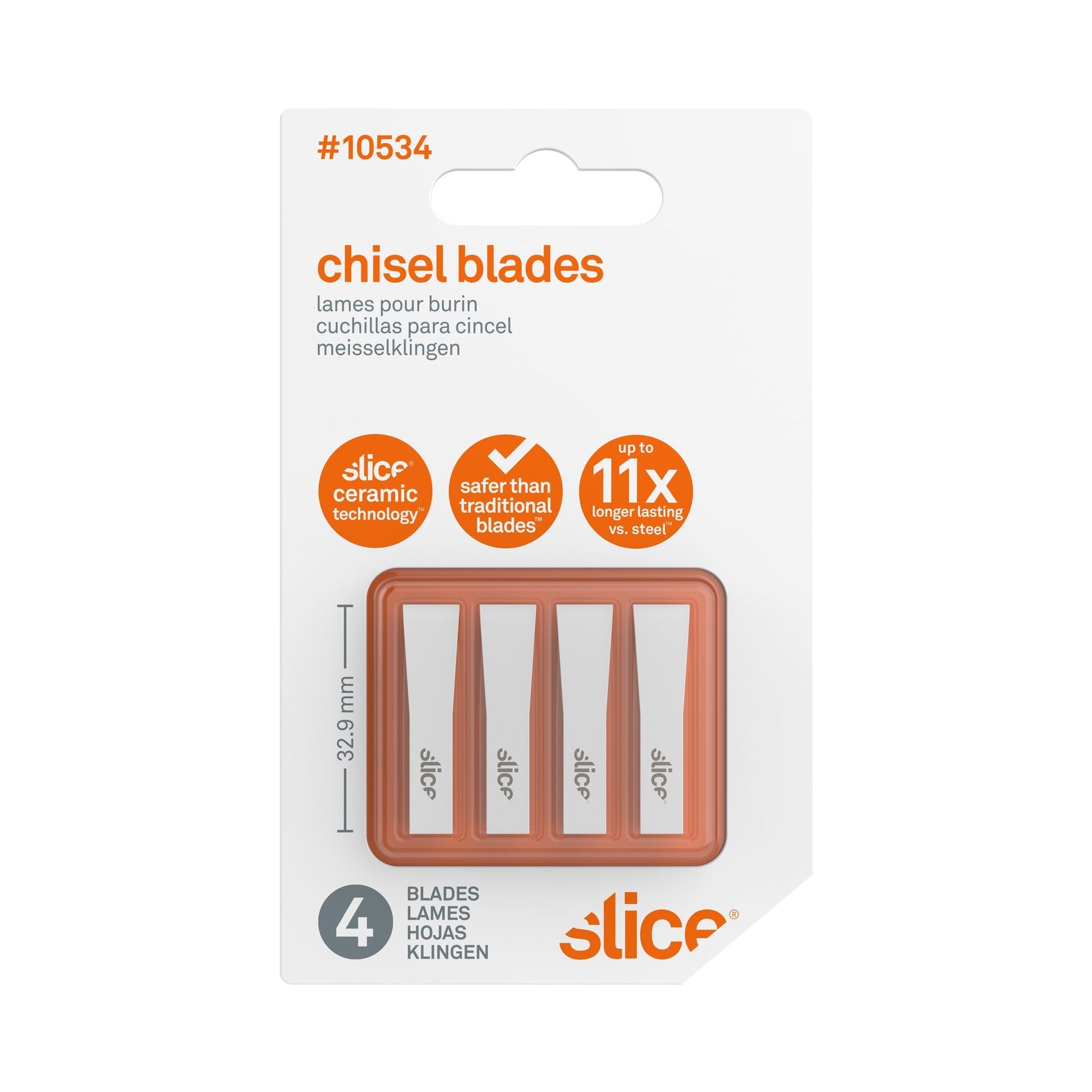SKU #10534
Cuchillas para cincel
Las cuchillas para cincel Slice® 10534 combinan nuestro excepcional filo finger-friendly® seguro para los dedos con un óxido de zirconio muy resistente para conseguir un filo de raspado más estable, preciso y seguro. Estas cuchillas, ideales para trabajos detallados, son compatibles con casi todos los mangos de cutters para manualidades y bisturís de Slice. Son químicamente inertes, aptas para su uso en autoclave y no conducen la electricidad por lo que son perfectas para fabricantes de componentes electrónicos o trabajadores de laboratorio. Al igual que el resto de las cuchillas cerámicas de Slice, son seguras al tacto y duran hasta 11 veces más que otras cuchillas de metal con características similares.
- Tipo de cuchilla: cincel
- Más segura que las cuchillas tradicionales
- Filo finger-friendly® que raspa con eficacia
- Dura hasta 11,2 veces más que las cuchillas de acero para cincel
- Menos cambios de hoja = menos lesiones
- Minimiza lesiones, reduce los costes
- No produce chispas, no conduce la electricidad, no magnética
- Químicamente inerte, nunca se oxida
- Sin aceite ni lubricantes
- No requiere un contenedor para objetos afilados
- 100% reciclable
- Segura hasta 1600°C
- Mangos compatibles: 10548, 10589, 10568
- 4 cuchillas de un solo filo en cada paquete
- SKU #10534
Especificaciones del producto
Especificaciones del producto
Cutting Depth:
Material: zirconium oxide
Dimensions: L x W x H
Weight: 0.01 kg


Vídeos
-
Scratchboard Artist Interview: Tools for Scratchboard Art
-
Cutting Copper Foil: It’s Easy With Slice Tools
-
Blade Replacement for Slice Craft Tool Handles
Productos relacionados
Preguntas frecuentes
What Are Chisel Blades Made From?
Slice safety ceramics—made from 100 percent zirconium oxide—last up to 11 times longer than steel, so it’s unlikely you’ll need to sharpen your Slice blade any time soon. Even if you could (our blades are sharpened on diamond wheels), we don’t recommend sharpening our blades because you won’t be able to achieve our safer finger-friendly® edge at home.








